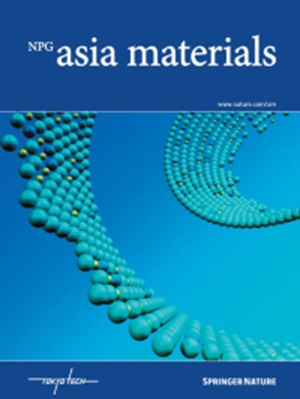Metasurface-enabled multifunctional single-frequency sensors without external power
IF 8.3
2区 材料科学
Q1 MATERIALS SCIENCE, MULTIDISCIPLINARY
引用次数: 0
Abstract
IoT sensors are crucial for visualizing multidimensional and multimodal information and enabling future IT applications/services such as cyber-physical spaces, digital twins, autonomous driving, smart cities and virtual/augmented reality (VR or AR). However, IoT sensors need to be battery-free to realistically manage and maintain the growing number of available sensing devices. Here, we provide a novel sensor design approach that employs metasurfaces to enable multifunctional sensing without requiring an external power source. Importantly, unlike existing metasurface-based sensors, our metasurfaces can sense multiple physical parameters even at a fixed frequency by breaking classic harmonic oscillations in the time domain, making the proposed sensors viable for usage with limited frequency resources. Moreover, we provide a method for predicting physical parameters via the machine learning-based approach of random forest regression. The sensing performance was confirmed by estimating the temperature and light intensity, and excellent determination coefficients larger than 0.96 were achieved. Our study affords new opportunities for sensing multiple physical properties without relying on an external power source or requiring multiple frequencies, which markedly simplifies and facilitates the design of next-generation wireless communication systems. Metasurface-based sensors provide a battery-free sensing solution for maintaining numerous IoT devices with little human resources. However, the conventional method exploited resonant mechanisms associated with multiple physical parameters through different frequencies, although available frequencies were strictly limited. We report the first sensor design approach using circuit-based metasurfaces that offer a higher degree of freedom to design time-varying scattering profiles associated with multiple physical properties at a single frequency. Our prototype detects light intensity and temperature with an excellent determination coefficient above 0.96 via a machine-learning technique.

无需外接电源的元表面多功能单频传感器
物联网传感器对于可视化多维和多模态信息以及实现未来IT应用/服务(如网络物理空间、数字孪生、自动驾驶、智能城市和虚拟/增强现实(VR或AR))至关重要。然而,物联网传感器需要无电池才能实际管理和维护越来越多的可用传感设备。在这里,我们提供了一种新颖的传感器设计方法,该方法采用超表面来实现多功能传感,而无需外部电源。重要的是,与现有的基于超表面的传感器不同,我们的超表面即使在固定频率下也可以通过打破时域中的经典谐波振荡来感知多个物理参数,这使得所提出的传感器可以在有限的频率资源下使用。此外,我们提供了一种通过基于随机森林回归的机器学习方法来预测物理参数的方法。通过对温度和光强的估计,验证了其传感性能,获得了大于0.96的优良测定系数。我们的研究为传感多种物理特性提供了新的机会,而不依赖于外部电源或需要多个频率,这大大简化和促进了下一代无线通信系统的设计。基于metassurface的传感器为维护大量物联网设备提供了一种无电池传感解决方案,只需很少的人力资源。然而,传统的方法是通过不同的频率来利用与多个物理参数相关的共振机制,尽管可用的频率受到严格限制。我们报告了第一种使用基于电路的超表面的传感器设计方法,该方法提供了更高的自由度来设计与单一频率下多个物理特性相关的时变散射曲线。我们的原型通过机器学习技术检测光强度和温度,确定系数在0.96以上。
本文章由计算机程序翻译,如有差异,请以英文原文为准。
求助全文
约1分钟内获得全文
求助全文
来源期刊

Npg Asia Materials
MATERIALS SCIENCE, MULTIDISCIPLINARY-
CiteScore
15.40
自引率
1.00%
发文量
87
审稿时长
2 months
期刊介绍:
NPG Asia Materials is an open access, international journal that publishes peer-reviewed review and primary research articles in the field of materials sciences. The journal has a global outlook and reach, with a base in the Asia-Pacific region to reflect the significant and growing output of materials research from this area. The target audience for NPG Asia Materials is scientists and researchers involved in materials research, covering a wide range of disciplines including physical and chemical sciences, biotechnology, and nanotechnology. The journal particularly welcomes high-quality articles from rapidly advancing areas that bridge the gap between materials science and engineering, as well as the classical disciplines of physics, chemistry, and biology. NPG Asia Materials is abstracted/indexed in Journal Citation Reports/Science Edition Web of Knowledge, Google Scholar, Chemical Abstract Services, Scopus, Ulrichsweb (ProQuest), and Scirus.
 求助内容:
求助内容: 应助结果提醒方式:
应助结果提醒方式:


